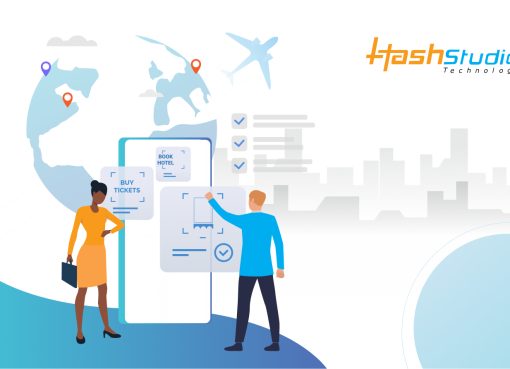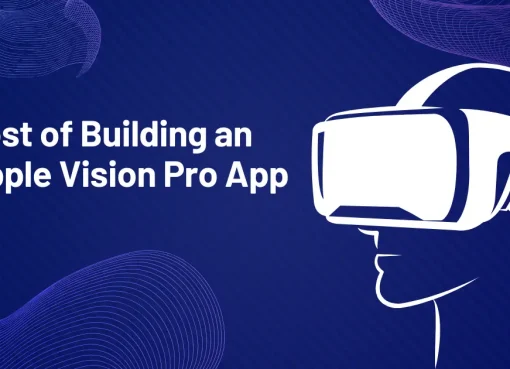They say, “The first impression is the last impression”. The same applies to customer service. The first touchpoint between your prospects and your business determines whether they will become customers or not. Businesses are turning to chatbot development platforms today to perfect first impressions and follow-up impressions.
In today’s market, excellent customer service makes customers choose you over your competitors. With bots, you can address your customers’ queries instantly across channels without relying on a support agent. Due to their benefits, chatbots have become a necessity for businesses to provide impeccable customer service.
Since Facebook opened up its developer platform and explored chatbot possibilities through its Messenger app, chatbot use has accelerated.
Since then, many chatbot development platforms have emerged to help businesses build omnichannel chatbots that boost sales, generate leads, improve customer service, and more.
Table of Contents
How To Build A Chatbot – Determining Use Cases, Requirements, And Types
The process of getting started with chatbots can seem overwhelming at first. Building a chatbot involves multiple aspects, including strategy, conversational flow, technology, tools, process, reporting, and more.
Building a chatbot begins with identifying –
- What problem are you trying to solve? This becomes your use case.
- What is the current amount of time you/your team spend on this issue? Later, you can define your ROI based on this.
- Could you automate 100% of the process with a bot, or do you need human intervention? By doing this, you can determine if you need a chatbot-to-human handover feature on the platform.
- Does the chatbot need to pull/push data from a third-party system? As a result, you can narrow down your search to platforms that are already integrated.
Assessing your processes, understanding your business goals, and designing the chatbot conversation flow to handle input/output efficiently will help you build a chatbot.
You can build three types of bots, including –
Rule-Based Chatbots– Rule-based bots follow a predefined conversation flow that flows logically based on the user’s inputs/choices. Clicking on buttons, menus, and carousels, and answering questions guides users through the conversation flow.
A rule-based bot is easier to build and can be navigated easier by users. Users cannot ask their own questions but can enter details when the bot asks for them (contact information, use case details, etc.).
AI Chatbots– Natural language processing is used by AI chatbots to analyze sentence structure and then process that information to provide better answers over time.
AI chatbots understand the intent behind the customer’s question and provide a relevant and contextual answer rather than using predetermined output text designed by humans.
Hybrid Chatbots– Hybrid chatbots combine rule-based logic and artificial intelligence, along with live chat functionality to provide superior customer service. Building a chatbot requires the following steps:
- Determine what tone and personality the chatbot should have based on your particular business and use cases.
- Ensure comfortable and fluent conversations with the chatbot by including a human element.
- It is imperative to use scripting data that reflects the target audience, as the success of the conversation design is largely determined by context and user intent.

Best Chatbot Platforms for 2024
1. Chatfuel– The first chatbot platform, Chatfuel, is limited to Facebook Messenger only. With NLP, you can identify intents and utterances, and then share predefined responses. Chatfuel’s key feature is that it stores the users’ data in the database, so you can contact them in the future as needed.
Features
- Chatbot analytics and 3rd-party integration
- Action and activity management
Advantages
- 50 languages are supported
Disadvantages
- Poor documentation process
2. Intercom– Intercom offers a variety of customer support products. The company provides custom chatbots for sales, marketing, and customer service. Live chat options are also available with these bots, which can also be integrated with e-commerce and social platforms.
Features
- Utilize advanced targeting to engage every qualified lead proactively
- Easily create bots without coding
Advantages
- High-quality, personalized help at scale
- CRMs can integrate social media conversations
Disadvantages
- Building a bot is difficult because of the complex UI
- There is no free version available
3. Flow XO– Flow XO is another option for those who want to build bots without coding. Bots can be built and deployed across multiple platforms, and they can be integrated with third-party systems.
Features
- Editor with drag-and-drop functionality
- Support for multiple channels
- A wide range of third-party integrations
Advantages
- Technical expertise is not required
- You can try it for free
Disadvantages
- Technical documentation is lacking
4. WotNot– WotNot is the leader in chatbot development, offering more than 16 industries with conversational marketing solutions.
With no-code chatbot builders, you can create bots with a drag-and-drop interface, from scratch, or with pre-existing templates that you can easily customize.
With WotNot, you get the best of both worlds – a chatbot and a live chat tool to scale sales and support. It is a platform perfect for building your bot quickly and going live as soon as possible.
Features
- With the chatbot-to-human handover feature, a human agent can participate when necessary in the conversation.
- The no-code bot builder lets you create bots instantly by simply dragging and dropping.
- In real-time, transcripts of chatbot conversations can be emailed to sales and support teams.
- The Chatbot analytics tool provides a bird’s eye view of a bot’s performance, such as top countries, top intentions, average conversation time, etc.
Advantages
- Unlimited conversations and messages
- Integrates seamlessly with Salesforce, Shopify, Zoho, WordPress, Slack, Dialogflow, IBM Watson, and many others.
- Provides access to multiple channels, including messaging, WhatsApp, SMS, and mobile applications
Disadvantages
- Up to 10 bots are allowed per account
5. Landbot.io– The intuitive tool Landbot.io lets you create rule-based bots and AI-powered bots to facilitate high-quality dialogues with prospective customers. Also, Landbot lets human agents jump into the conversation midway and take over from the chatbot.
Features
- Use brand elements to personalize your chatbots
- Creates chatbots quickly with a drag-and-drop interface
- It lets you create dialog flows, test and analyze chatbots without coding, and integrate it with other online apps.
Advantages
- Simple to use
- Multi-platform chatbot creation
- Free version available
- There are several integrations available.
Disadvantages
- Conversation limit
- Only paid plans offer integrations
6. Octane AI– With Octane AI, you can integrate a chatbot with a Shopify store via Facebook Messenger. You can automatically respond to customer questions, send receipts, and help customers find the products they’re looking for using this platform.
Features
- Analyzing customer behavior with an analytics interface
- With voice, image, and video support, quick-start templates, surveys, and notifications are available
- Easy FAQ handling and automated workflows
Advantages
- Support for abandoned cart notifications and shipping information
- Integrating with Slack, Nexmo, Salesforce, Facebook Messenger, and PayPal are just a few of the platform’s features
Disadvantages
- Only available in Messenger
- Learning complex interfaces and UX takes time
7. Drift Chatbot– Drift started out in live chat and recently expanded into chatbots. Their chatbot is specifically designed to book meetings for sales teams. Without using any forms, the bot facilitates conversations with leads and qualifies website visitors. Additionally, it schedules a meeting with the right sales representative.
Over the years, Drift’s chatbot has received many positive reviews for its exceptional performance. You can read Drift reviews to find out how it has helped businesses improve their lead qualification and meeting booking processes.
Features
- Chatbot and live go hand in hand
- Engages people immediately on the website, increasing the likelihood that they will share their contact information
Advantages
- Allows for real-time conversations
- Answer questions quickly with Drift Automation
- Wide range of integrations
Disadvantages
- The pricing model is expensive
- Push notifications in the mobile app do not clarify conversations very well
8. Bold360– One of the most popular bot solutions is Bold360, which makes customer service agents more efficient by using natural language processing services to take over conversations or transfer conversations directly to agents.
Features
- Tools for customer engagement, HR & IT internal networks, APIs, and SDKs.
- Patented NLP technology that understands customers’ intent without keyword matching.
Advantages
- Quick and hassle-free human handoff
- Live agent tightly integrated
- Platform with a wide range of features
Disadvantages
- A haphazard pricing strategy
- UI/UX is outdated
- Visually, the platform is unappealing
9. LivePerson– LivePerson’s AI-powered chatbot platform is an excellent tool for building, deploying, and optimizing chatbots. LivePerson offers real-time intent detection and continuous optimization based on advanced analytics.
Features
- User-friendly and intuitive for new employees
- Create custom pre-written chat statements
- Customers benefit from features such as hyperlinks, canned responses, etc.
Advantages
- Rich and convenient live chat features
- Simple and easy to use
- Communication flexibility
Disadvantages
- Data overload slows down the program
- There is no free trial available
- Reporting is a bit challenging
10. Botsify– Botsify offers an easy-to-use bot builder for creating bots for websites, Messenger, and Slack. With Botsify, you can seamlessly switch from a bot to a human agent.
Features
- Create conversational forms
- Chatbot to human handoff available
- Multi-channel support
Advantages
- Multiple third-party integrations
Disadvantages
- The platform has a steep learning curve
Conclusion
When choosing a chatbot platform or an agency to develop your chatbot, you should consider the pros and cons, and your use case(s), and do additional research. There have been ten leading chatbot platforms for quite some time.
As we stated earlier, chatbots have become a necessity for businesses rather than a nice-to-have. With today’s technologically advanced business environment, chatbots keep your business accessible round-the-clock without you having to hire extra customer service representatives.
Over the last five years, HashStudioz has stood out as a premier chatbot development company, specializing in high-quality chatbot development services. Their expertise in AI, natural language processing, and machine learning allows them to craft intelligent and tailored chatbots. With a client-centric approach, they design solutions aligned with specific business objectives, ensuring transparency and staying up-to-date with the latest advancements in the field.
A chatbot is built based on the needs and wants of your audience. Contact us today to schedule a free consultation so we can help you map out use cases for conversational AI to automate your processes.

Frequently Asked Questions
1. What are chatbots and why are they critical for businesses?
Chatbots are automated conversational agents that interact with users using natural language processing and artificial intelligence. They are important for businesses as they enhance customer service, streamline processes, and improve user engagement by providing instant responses and assistance.
2. How do I determine the use cases and requirements for building a chatbot?
Identifying the problem you want to solve and assessing the time spent on the issue are crucial steps. Understanding if the process can be fully automated or requires human intervention, and whether third-party data integration is needed are also key factors in determining chatbot use cases and requirements.
3. How can I choose the right chatbot platform for my business?
To choose the right chatbot platform, consider factors such as your specific use case, required features, integration capabilities, ease of use, technical expertise needed, and budget. Evaluate the pros and cons of each platform in alignment with your business goals.
4. Can I integrate the chatbot with other systems or applications?
Yes, most chatbot platforms offer integration capabilities with various third-party systems and applications, such as CRM tools, messaging platforms, e-commerce platforms, and more. Check the platform’s documentation for the specific integrations available.
5. What are the benefits of using chatbots in business?
Chatbots offer several benefits for businesses, including 24/7 availability, improved customer engagement, cost savings, increased efficiency in handling repetitive tasks, personalized interactions, and data collection for better insights and decision-making.




